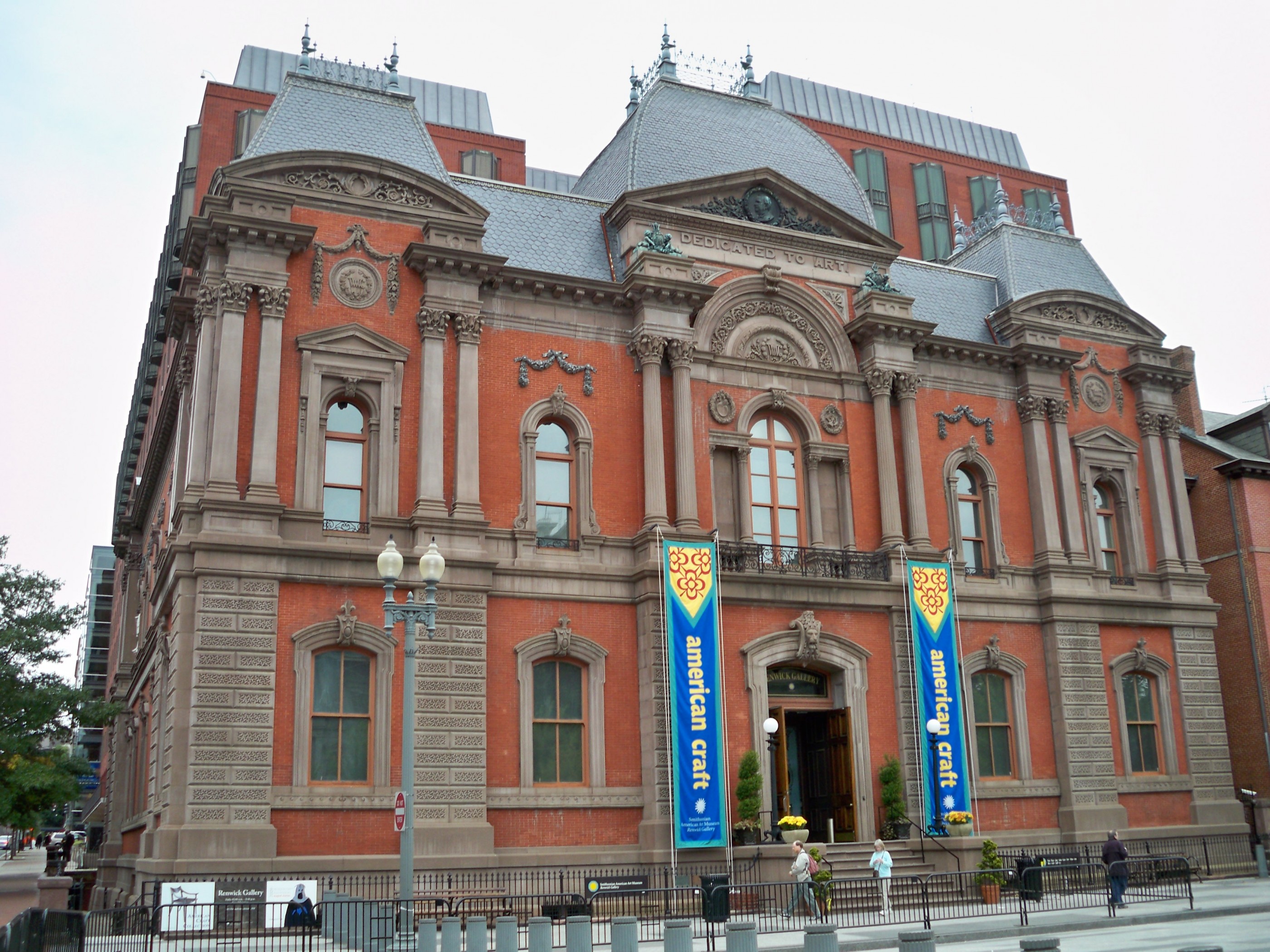If you’ve been on any form of social media over the past year, it’s likely you’ve seen the Renwick Gallery’s “Wonder” exhibition. At the very least, you’ve scrolled passed the giant rainbow piece, where thousands upon thousands of vibrantly colored threads make up what is officially named “Plexus A1,” and unofficially named “tiny square rainbow emoji” in every Instagram caption.
On Nov. 13, 2015 — after a two-year renovation — the Renwick Gallery opened its doors to huge success. According to The Washingtonian, the gallery’s “Wonder” exhibition alone pulled in around 100,000 visitors its first month. Its contemporary pieces spread like wildfire on social media, becoming virtually inescapable on both Instagram and Snapchat. But good things aren’t meant to last, and after an eight-month run, the “Wonder” exhibit closed to make way for the gallery’s permanent collection, entitled “Connections: Contemporary Craft at the Renwick Gallery.” While the exhibition could be considered admirable on its own, compared to “Wonder” it’s just plain flat.
First, a disclaimer: I hadn’t ever stepped foot inside of the Renwick before “Wonder.” I didn’t know what type of crafts they had on display before the renovation. Hell, I didn’t even know the Renwick Gallery was an art museum specifically targeted toward contemporary crafts. I just remember being struck with awe the first time I witnessed the ethereal beauty radiating off of “Plexus A1.” In contrast, the very first emotion I felt when stepping into “Connections” was one of severe disappointment.
Part of what made “Wonder” so successful was that the audience was given the chance to engage with the art. You didn’t just look at each piece; instead you were surrounded by it, forced to engage with it in some way. This interaction could be as small as minding your step to avoid marbles glued across the floor, or as invasive as actually standing in the middle of a nest constructed of sticks and twigs. In “Connections,” there are no larger-than-life sculptures. There are no maze-like pieces to explore. Each work of art is neatly and carefully laid out for the public to view and admire from a distance. Pretty, sure, but definitely lacking in excitement.
While on the topic of excitement, it’s no secret that taking the perfect artsy-Tumblr-girl picture to post on Instagram is rather exhilarating. Of course, not every art museum should cater to the needs of a social media addict, but a big reason why the Renwick became so popular post-renovation is because it was so social media friendly. The museum still sports the cute little “photography encouraged” signs, but the problem isn’t a photography ban — the problem is that there’s nothing extremely interesting to photograph. While unique, the pieces found in “Connections” lack any sort of — forgive me — genuine connection. Instead of appreciating a piece based off a feeling it gives you, you appreciate it because you know you’re supposed to. A certain sense of seriousness becomes reinstated into the experience, which ultimately is a detriment to both the gallery and its patrons.
Despite all this, my main disappointment with “Connections” isn’t the art or the layout. In fact, my primary source of disgruntlement is mostly narcissistic and totally millennial-like. Here’s the thing: In “Connections,” I wasn’t able to be an artist. Not that I’m a traditional artist normally; I can’t draw for my life, and my fine-motor skills are seriously lacking. But with “Wonder,” I felt like both myself and every other person around me were given permission to be artistic. Again, this comes down to the photography aspect of things. Each piece was incredibly complex and intricate, yet also simple enough to provide a canvas for the viewers to explore. We got to choose our angles and decide whether or not a friend was allowed in the frame. We were the artists, and the gallery was our muse. Our own creativity led to a deeper level of understanding with the art. This element wasn’t present in “Connections,” nor is it present in most art museums. The Renwick had it at one point and lost it, which was what had me walking down its marble steps with the inescapable feeling that I was missing something.
At the end of the day, I didn’t hate “Connections.” It just wasn’t something that I expected, or particularly enjoyed. But hey, if you’re looking for a regular exhibit, with pretty but ultimately non-inspiring pieces of art, then “Connections” may just be for you. But if you’re looking for the immersive, artistically engaging and totally Instagram-worthy material that “Wonder” brought on, I suggest you keep walking.



